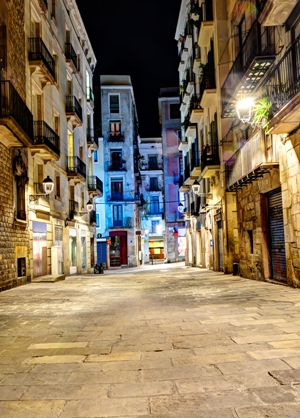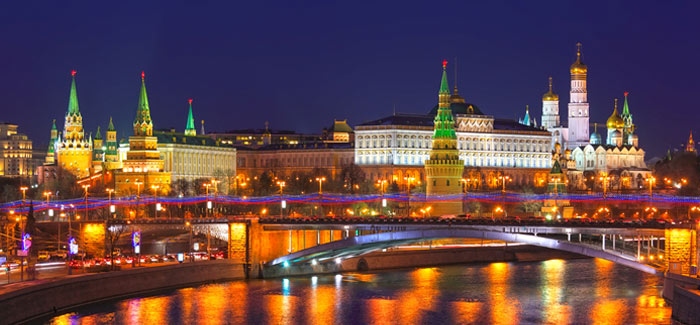American Rachel Ruderman fell in love with Barcelona after spending a year there during her undergraduate degree. She’s now returned to take a Masters in Translation Studies at the Universitat Pompeu Fabra, and has lots recommendations for others considering studying in this cosmopolitan Spanish city.
Barcelona is absolutely one of the world’s best places to be a student. There are several major universities, so student life is really active here. The universities have tons of activities going on, and even better, Barcelona’s an international city so it’s easy to make friends from all over the world.
For an American, the architecture in Barcelona is astounding. Buildings that we consider old in the US are practically brand new in Europe.
Sadly, now that I’ve been here a while I don’t appreciate the beautiful architecture like I used to. At first, I would walk around looking up at the buildings on every street, and now I pay more attention to where I’m going – probably safer!
Out and about
When I first arrived, I was very impressed with the public transportation. Metro, buses, bike-sharing – it’s always easy to get around.
However, I’ve started to notice that while many streets in Barcelona have bicycle lanes, there are also many that don’t. So if you pick the wrong route, cycling can sometimes be more frustrating than convenient!
Some of my favorite places in Barcelona are parks and public gardens, especially Parc de la Ciutadella and el Laberinto de Horta. I also love the plazas in the Gràcia district, the view from the fortress at the top of Montjuïc, and la fuente mágica (the ‘magic fountain’).
During summer, the city’s Barceloneta Beach is a top destination, and it’s also not far to the Costa Brava – I’ve never been, but I’ve heard it’s amazing.
Thanks to low-cost airlines, it’s also cheap and easy to travel to other European cities on the weekend. I have a friend who went to Rome for a weekend, for just €8 return trip!
Local traditions, shops, clubs - and libraries
During winter, I love the Catalan traditions. The Christmas markets are filled with caganers (nativity-scene figurines) and caga tíos (difficult to explain, but basically ‘pooping logs’...).
In summer, each of Barcelona’s neighborhoods hosts a celebration. There are various activities during the day and usually live concerts at night. Festa Major de Gràcia, in the Gràcia neighborhood, is my favorite of these. All of these neighborhood celebrations lead up to La Mercé in September, which is the city’s main annual festival.
For shopping, Carrer Príncipe d’Asturies in Grácia has lots of unique stores, and Carrer Verdi is great for international cuisine. At Portal de l’Àngel you can find all the major clothing brands – Zara, H&M, Mango, Springfield, Bershka and so on.
The El Born area is also good for shops, and I love el Passeig del Born, the central street and square.
As far as nightlife goes, my favorite clubs are Razzmatazz and Arena, but I have friends who love Apolo and Plataforma. Lots of international students go to Shoko, Sutton, Opium Mar – and many others.
Even studying seems somehow less painful when you’re doing it in beautiful, centuries-old buildings like the Biblioteca de Barcelona and Casa Asià. I know of at least one library that’s open 24/7.

Be prepared
There are some down sides of course. Barcelona is a smoking city and it’s not easy to avoid the second-hand smoke. Two years ago they finally banned smoking in enclosed places, but not everyone abides by the law, especially inside clubs at night. I still find it hard to adapt to that.
Pickpocketing is also a huge problem here, and tourists are particularly targeted. The good news is that it’s non-violent, and if you’re careful, it won’t happen to you. I never put anything in my pockets or the outside pockets of my backpack, and when I go out I bring the bare minimum: phone, ID and cash.
Two months ago I learned that lesson the hard way when my wallet was stolen with my passport inside. Working through the Spanish bureaucracy to get my student visa reissued was a nightmare, so it’s best to avoid all that in the first place.
Learn the lingo
And then there’s the Catalan language! At first this was very challenging. Many students who come to Barcelona think only Spanish is spoken here, or that Spanish is enough, and it can be a shock to find all the street signs and university announcements in Catalan.
I ended up taking the Catalan class my university offered and had the best time ever. I made awesome international friends, and then it was super easy for me to make Catalan friends because they love it when someone learns their language.
If you’re a foreigner and you ask a local for help in Catalan, suddenly they want to know all about you! Where are you from, how long have you been studying Catalan, what are you doing here... Seriously, the easiest way to meet locals in Barcelona is to speak their language.
To sum up...
Learn Catalan, eat paella on the waterfront, explore Gaudí’s architecture, go to language exchanges, get a Bicing card (to use the city’s bike-sharing system), walk down Las Ramblas, try pa amb tomàquet (a simple bread-based snack) and be careful with your things.
Barcelona is really what you make of it. There are so many things going on every day and so many different types of people to meet, there’s something for everyone. It’s just a matter of finding your niche.
- See where Barcelona ranks in the QS Best Student Cities >
- More student city guides: London, Singapore, New York, Paris...













